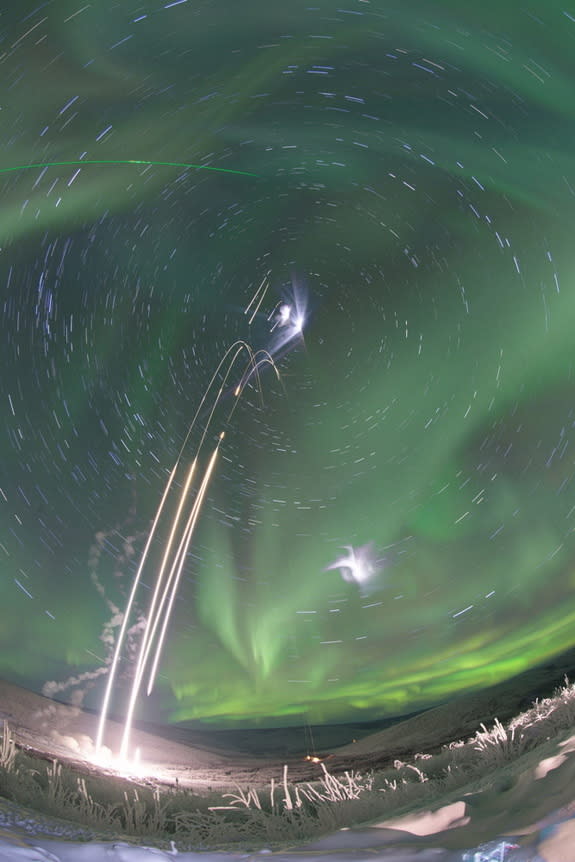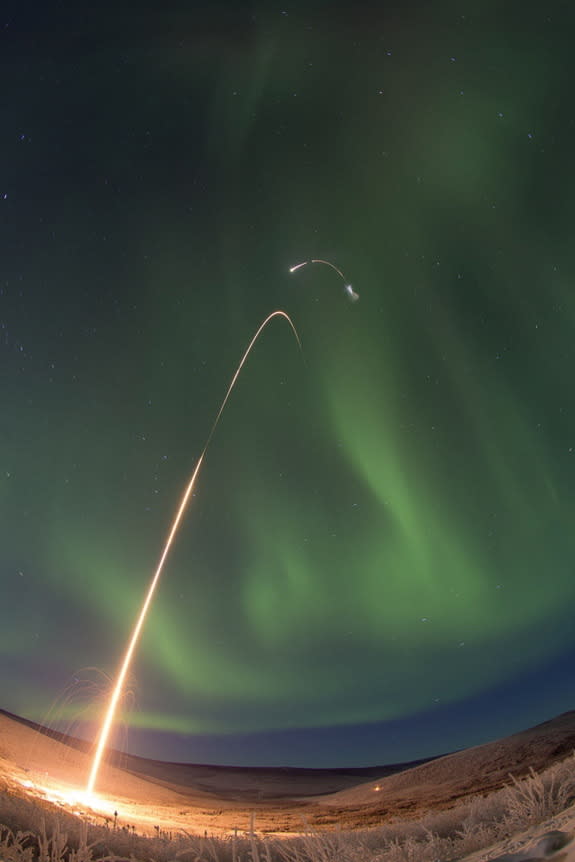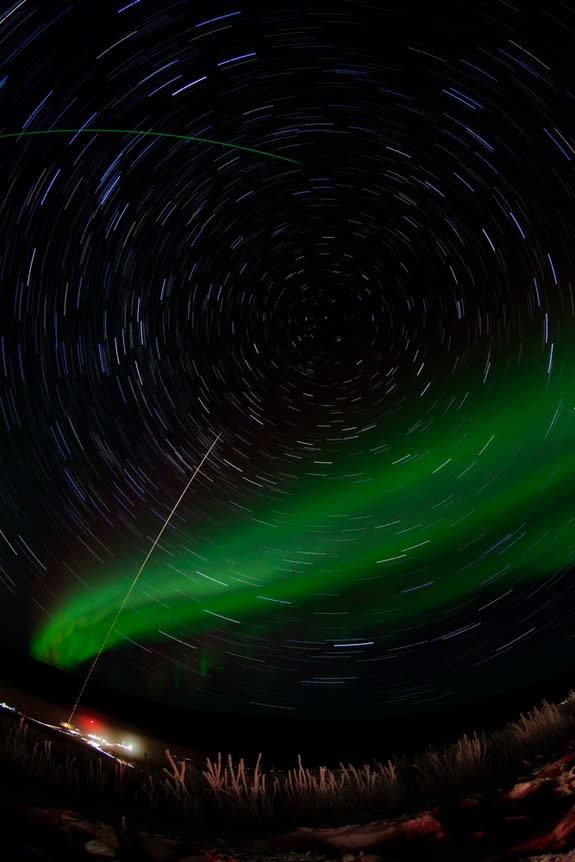See NASA Launch Rockets Into the Northern Lights in These Spectacular Photos
The gorgeous green glow of the northern lights served as a backdrop for bright white rocket tails in a set of amazing new photos. Five rockets launched from Poker Flat Research Range in Alaska this week carried experiments aimed at studying the science behind the aurora borealis.
Four of the five rockets launched from Poker Flat on Jan. 26, between 4 a.m. and 5 a.m. EST (0900 and 1000 GMT). Photographer Jamie Adkins captured long exposures of the rockets as they lifted off, and combined them into a single image. The long exposure creates the illusion that the rockets leave a long white tail behind them as they rise into the sky. In addition, Adkins caught the gorgeous green hues of the aurora borealis.
The first rocket, a NASA Terrier-Improve Malemute sounding rocket, took off at 4:13 a.m. EST (0913 GMT), followed one minute later by a NASA Terrier-Improved Orion rocket. Another Malemute rocket was launched at 4:46 a.m. EST (0946 GMT), followed one minute later by another Orion rocket. [NASA's Amazing Small Rocket Launches of 2015 in Photos]
The Malemute rockets carried payloads for the Mesosphere-Lower Thermosphere Turbulence Experiment, or M-TeXj, while the Orion rockets carried payloads for the Mesospheric Inversion-layer Stratified Turbulence (MIST) experiment. Together, the two experiments are designed to explore the response of the Earth's atmosphere to energetic particles in space. Some of these interactions create the northern and southern lights. Preliminary data show that all four payloads worked as planned.
A fifth rocket — a NASA Oriole IV sounding rocket — launched from Poker Flat on Jan. 25, at 5:41 a.m. EST (1041 GMT). That launch was also captured by Adkins, showing a beautiful lift off and gorgeous aurora. According to NASA, all four stages of the rocket are visible in the image.
The Oriole IV rocket carried the payload for the Auroral Spatial Structures Probe, which will study how electric currents in the upper atmosphere (where the auroras are produced) can cause the atmosphere to expand. According to a statement from Utah State University, the ASSP experiment launched one large instrument, "as well as six small probes that were ejected from the main instrument in midflight, creating a formation of probes over the aurora."
In preparation for the string of launches, a test launch took place at Poker Flat on Jan. 20. Adkins captured another stunning photo of the rocket trail during the test launch, and the breathtaking glow of the auroras.
Follow Calla Cofield @callacofield. Follow us @Spacedotcom, Facebook and Google+. Original article on Space.com.
Copyright 2015 SPACE.com, a TechMediaNetwork company. All rights reserved. This material may not be published, broadcast, rewritten or redistributed.



